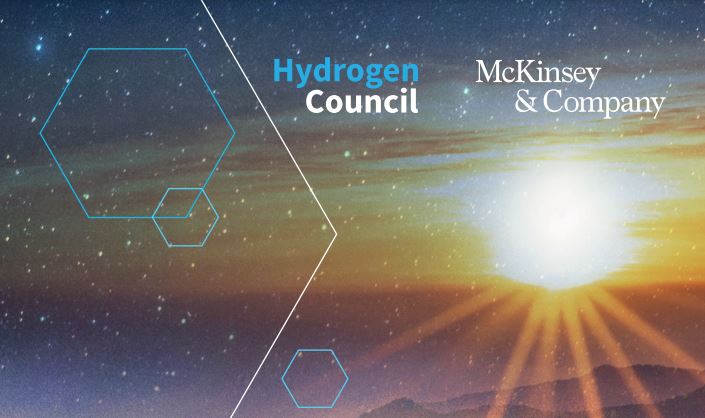Hydrogen Juggernaut Rolls On With $300 Billion Committed So far

Green Hydrogen, or hydrogen where the electrolysers are powered by renewable energy, has become a key ingredient of almost all the major energy transition plans across the world. Hydrogen is gaining acceptance as the one fuel that can truly replace fossil fuels in hard to replace areas, especially energy intensive industries.
It can also absorb the massive new renewable capacities being deployed, and in the pipeline, while allowing better management of the same renewable energy generated, by acting as a potable storage option itself. Driving down Green Hydrogen costs under ‘grey’ hydrogen( Made using natural gas as fuel) before 2030 is key, as the report also mentions.
The Hydrogen Council, an industry grouping that has emerged to champion the case for Hydrogen, has just released a report it commissioned with Mckinsey and co, “Hydrogen Insights 2021: A Perspective on Hydrogen Investment, Deployment and Cost Competitiveness, that builds on the momentum for Hydrogen that has been building up over the past two years.
The report offers a comprehensive perspective on market deployment around the world, investment momentum as well as implications on cost competitiveness of hydrogen solutions.
As of early 2021, over 30 countries have released hydrogen roadmaps and governments worldwide have committed public funding in support of decarbonisation through hydrogen technologies. No less than 228 large-scale projects have been announced along the value chain, with 85% located in Europe, Asia, and Australia. These include large-scale industrial usage, transport applications, integrated hydrogen economy, infrastructure, and giga-scale production projects. If all announced projects come to fruition, total investments will reach more than $300 billion in spending through 2030. Of this investment $80 billion can currently be considered “mature” – meaning that these projects are in the planning stage, have passed a final investment decision (FID), or are under construction, already commissioned, or operational.
Anticipating continued growth in scale, the report confirms that – from a total cost of ownership (TCO) perspective – hydrogen can become the most competitive low-carbon solution in more than 20 applications by 2030, including long haul trucking, shipping and steel. Two factors will be critical in achieving this result: first, it is essential that governments sustain their commitments to deep decarbonisation, backed by financial support, regulation and clear hydrogen strategies and targets, and translate these into long-term regulatory frameworks. Second, deployment approaches must target key “unlocks” such as reducing the cost of hydrogen production and distribution that will have the most significant impact on the rest of the industry.
Deployment through clusters with strong off-takers will help suppliers share both investments and risks while establishing positive reinforcing loops. Three cluster types are already gaining traction: 1) Industrial centres that support refining, power generation, and fertiliser and steel production; 2) Export hubs in resource-rich countries; and 3) Port areas for fuel bunkering, port logistics, and transportation. The reduced costs from clusters will enable global trade in hydrogen, connecting future major demand centres such as Japan, South Korea, and the European Union to regions of abundant low-cost hydrogen production means like the Middle East, North Africa, South America, or Australia.
“A huge step in the fight against climate change has been taken, as both governments and investors now fully grasp the role hydrogen can play in the energy transition. Now, to bring this potential to its full fruition, governments, investors and industrial companies must work together to scale up the hydrogen ecosystem around the world. Their collaboration in the coming months will allow for many of the projects around the world to become a reality and to turn hydrogen into a new, clean, abundant and competitive energy carrier,” said Benoît Potier, Chairman and CEO of Air Liquide and Co-chair of the Hydrogen Council.
The report offers a good perspective on the Hydrogen push, even though key targets, like driving down Hydrogen prices to $2 per kg or below, as many have targeted as a must to compete effectively with alternate polluting options, remain unclear yet.
For countries like India, the challenge is to take a call between trying to have its national hydrogen plan in place, or create conditions that enable leaders in the sector to consider investing in the country.




